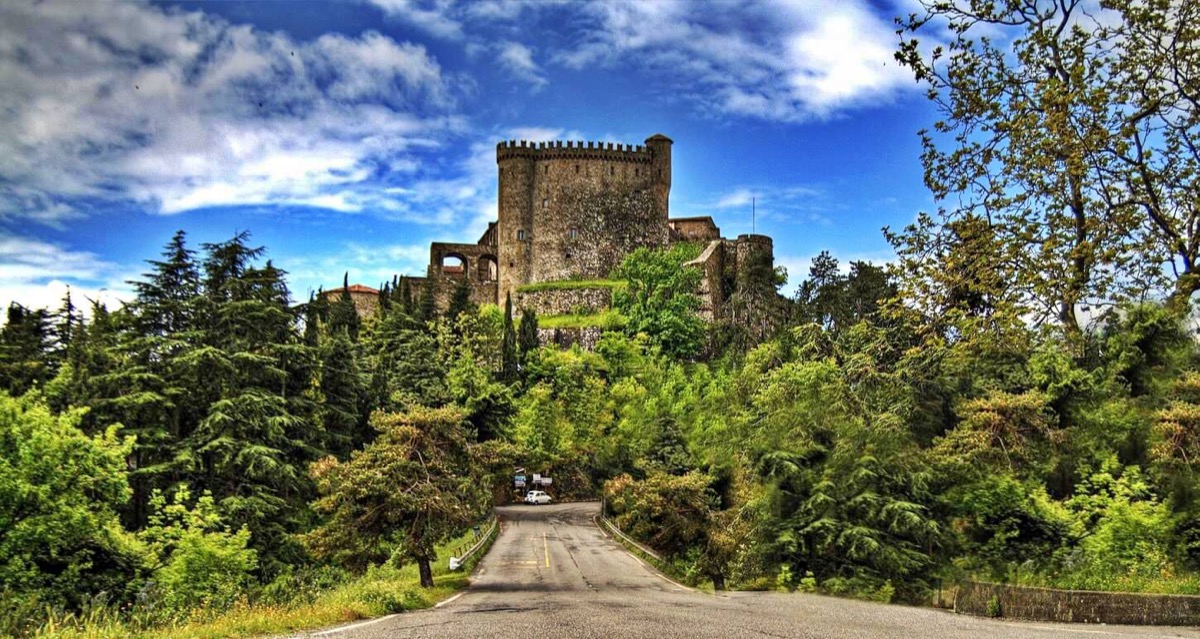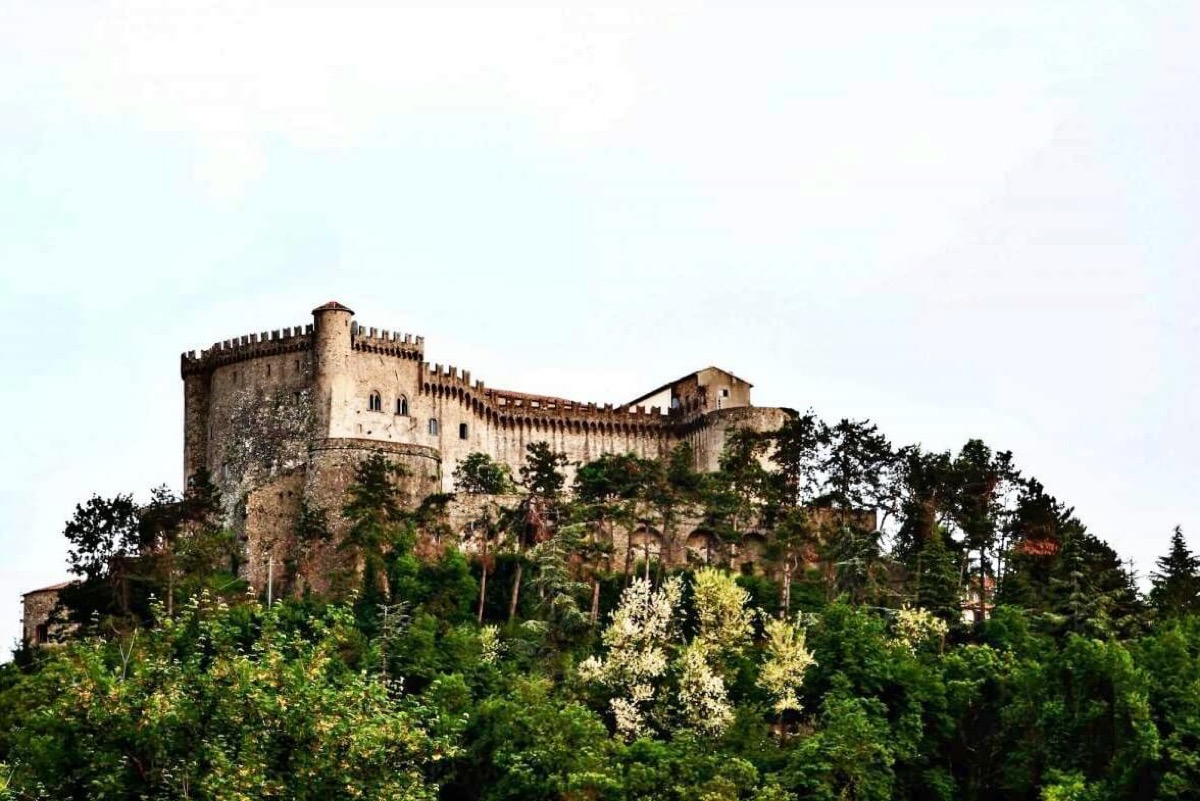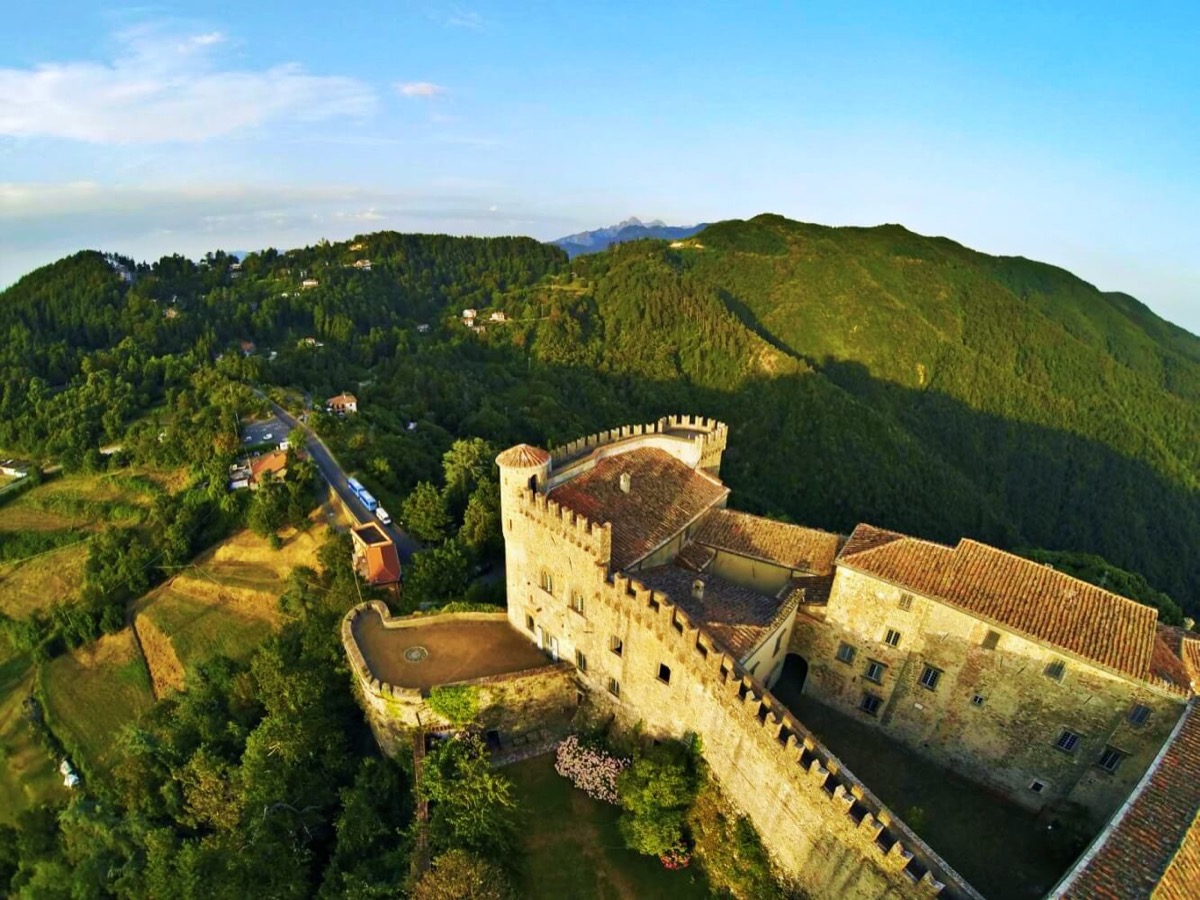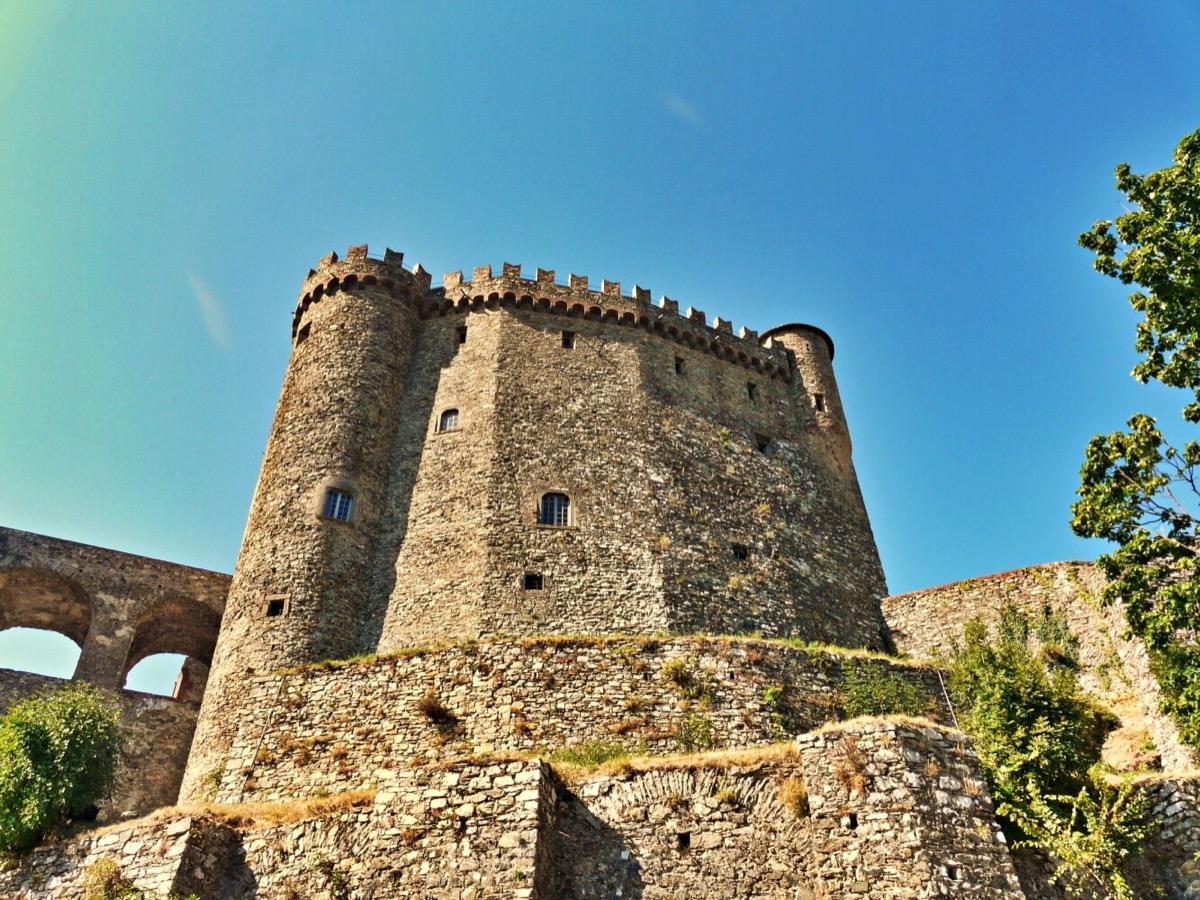Malaspina Castle
Provincia di Massa e Carrara Toscana Italy
castle, chateau
Castello Malaspina (Fosdinovo)
Provincia di Massa e Carrara Toscana Italy
castle, chateau
This Castle of medieval origins is one of the best preserved in Lunigiana and it played an important role in a feud belonging to the Malaspina family from the fourteenth to the eighteenth century
Il castello Malaspina è una dimora storica iscritta all'A
Previous names
Malaspina Castle, Castello Malaspina (Fosdinovo)
Description
This Castle of medieval origins is one of the best preserved in Lunigiana and it played an important role in a feud belonging to the Malaspina family from the fourteenth to the eighteenth century. The construction of the massive fortress merges with the underlying sandstone rock so that the whole structure seems carved out of the earth.
Built for defense, in 1340 the castle was officially ceded by the Noble family of Fosdinovo to the warlord Spinetta Malaspina who created the Marquisate of Fosdinovo and lived in the castle for the rest of his life.
In the sixteenth century, Gabriele and then Lorenzo Malaspina added the Renaissance courtyard while in the seventeenth century, under Jacopo Malaspina, the castle was enlarged. The basic design of the Castle of Fosdinovo consists of a square with four round towers, a semicircular rampart, two internal courtyards, a central courtyard, patrol trenches above the roof, hanging gardens, galleries and an ancient defensive wall. Once protected by a drawbridge, the main gateway enters into a thirteenth century Romanesque style courtyard, which is framed by marble columns supporting overhead arcades. From this small courtyard, where guns were once kept at the ready to defend the castle, a broad flight of stairs rises leading to a large central courtyard.
The courtyard boasts an elegant Renaissance porch with stone columns, a well and a beautiful sixteenth-century marble portal leading to interior rooms of the castle, decorated and painted before 1800. Next is the entrance hall, the dining room with a large fireplace and seventeenth century ceramics, the throne room, the great hall and the room of ‘trabocchetto’ (the trap-door room) with a torture room lying below. It is said that the evil marchioness Cristina Pallavicini, used to kill her lovers by surprising them with a trap door located at the foot of the bed, dropping them into the dungeon or torture room. Trapdoors such as this were common in the castle. There were three of these traps, two in the veranda close to the garden and one in a corner-tower. Underneath them there were sharp knives with the blades pointing upwards, so sharp that when someone fell through a trapdoor they were dropped immediately to their death. In addition to these terrible instruments of torture and death, there was another even more terrible. It was a kind of iron arm that jutted from the wall of the tower with a pulley and a ring connected by a rope. The victim was tortured and then left to hang before the whole town until they were dead.
The oldest east tower, is known as the "Dante chamber” where, according to tradition, the great poet slept when he was a guest at the castle during his period of exile. The frescoes in the grand central hall depict the solid friendship between Dante and the Malaspina family.
The visit around the Castle continues upstairs among countless other furnished rooms and along the exterior walkway above the roof which offers a stunning panoramic view.
https://www.visittuscany.com
Il castello Malaspina è una dimora storica iscritta all'A.D.S.I. e vincolata dalla Soprintendenza per i beni artistici e architettonici. Si trova nel paese di Fosdinovo in provincia di Massa Carrara. È il castello più grande e meglio conservato della Lunigiana, recentemente restaurato.
Il castello di Fosdinovo è stato residenza principale del marchese, reggitore dell'omonimo feudo, appartenente ad uno dei rami dei Malaspina dello Spino Fiorito, dal XIV al XVIII secolo. La costruzione dell'imponente fortezza, che si fonde perfettamente con la roccia arenaria, ebbe inizio nella seconda metà del XII secolo, anche se si parla del Castrum Fosdinovense già in un documento di Lucca del 1084. Innalzata a dominio e difesa del primitivo Castro di Fosdinovo, nel 1340 venne ufficialmente ceduta dai Nobili di Fosdinovo a Spinetta Malaspina, morto nel 1352. Egli creò così il marchesato di Fosdinovo risiedendo nel castello che il nipote Galeotto I, scomparso nel 1367, in seguito ingrandirà e abbellirà. Nella parte finale del Quattrocento fu restaurato razionalmente da Gabriele II Malaspina. Nel Cinquecento, grazie all'opera del suddetto regnante e del suo successore Lorenzo Malaspina, il castello acquistò l'aspetto di dimora gentilizia e la dimensione di corte rinascimentale, mentre nel Seicento, durante il marchesato di Giacomo (Jacopo) II Malaspina, il borgo si ingrandì ulteriormente fino a contare, nel 1636, ben ottocento “fuochi”.
Il castello di Fosdinovo si compone di una pianta quadrangolare con quattro torri rotonde orientate, un bastione semicircolare, due cortili interni (uno centrale), camminamenti di ronda sopra i tetti, giardini pensili, loggiati ed un avamposto verso il paese, detto anticamente lo “spuntone”, formidabile strumento difensivo (una sorta di rivellino). Protetta, nei tempi trascorsi, da un ponte levatoio, la porta d'ingresso duecentesca introduce in un piccolo cortile in stile romanico dove una colonna marmorea, anch'essa del Duecento, ne sostiene i loggiati superiori. Dal cortile, dove si trovavano i cannoni difensivi, partono le larghe rampe di scale (ci si passava con i cavalli) che conducono a quello più grande centrale. Questo presenta un elegante porticato rinascimentale con colonne in pietra, un pozzo ed un bel portale cinquecentesco in marmo da cui comincia il percorso per raggiungere le sale del castello, arredate ed affrescate alla fine del 1800. La Sala d'ingresso, la Sala da pranzo col grande camino settecentesco e le ceramiche da farmacia del Seicento, la Sala del trono, il vasto Salone con gli attigui salotti e la camera del trabocchetto con la sottostante camera delle torture. Si racconta che proprio da questa stanza, la marchesa Cristina Pallavicini, donna malvagia e lussuriosa, eliminava i suoi amanti facendoli cadere nella botola situata ai piedi del letto. E proprio i trabocchetti erano una caratteristica del castello. Ne esistevano tre, due nel loggiato che dava sull'orto ed uno nella torre d'angolo. Alla loro base erano infissi affilati coltelli con la punta rivolta verso l'alto, di modo che lo sventurato, una volta caduto dalla botola attivata con una molla, veniva colto immediatamente dalla morte. Oltre a questi tremendi strumenti di tortura, ne esisteva un altro ancor più terribile. Si trattava di un braccio di ferro che sporgeva dal muro della torre, ad esso era applicata una carrucola ed un anello murato in terra, collegati da una corda. Il torturato veniva appeso e lasciato penzoloni sotto gli occhi di tutti, finché non fosse morto. Nella più antica torre di levante, si trova la cosiddetta “camera di Dante”, dove, secondo la tradizione, dormì il Sommo Poeta quando fu ospitato nel castello durante il periodo di esilio. Gli affreschi presenti nel grande salone centrale raffigurano proprio l'antica amicizia di Dante con i Malaspina, ricordata da Giovanni Boccaccio.
I piani superiori sono contraddistinti da altre sale arredate. Il castello, di proprietà degli eredi Torrigiani-Malaspina, è visitabile ed è completamente ammobiliato.
Useful information
GRATUITO
8.00 EUR
5.00 EUR
- WiFi
- Colazione inclusa
info@castellodifosdinovo.it
Bellissima vista sul mare e sulle montagne
-
External links
Nearby castles
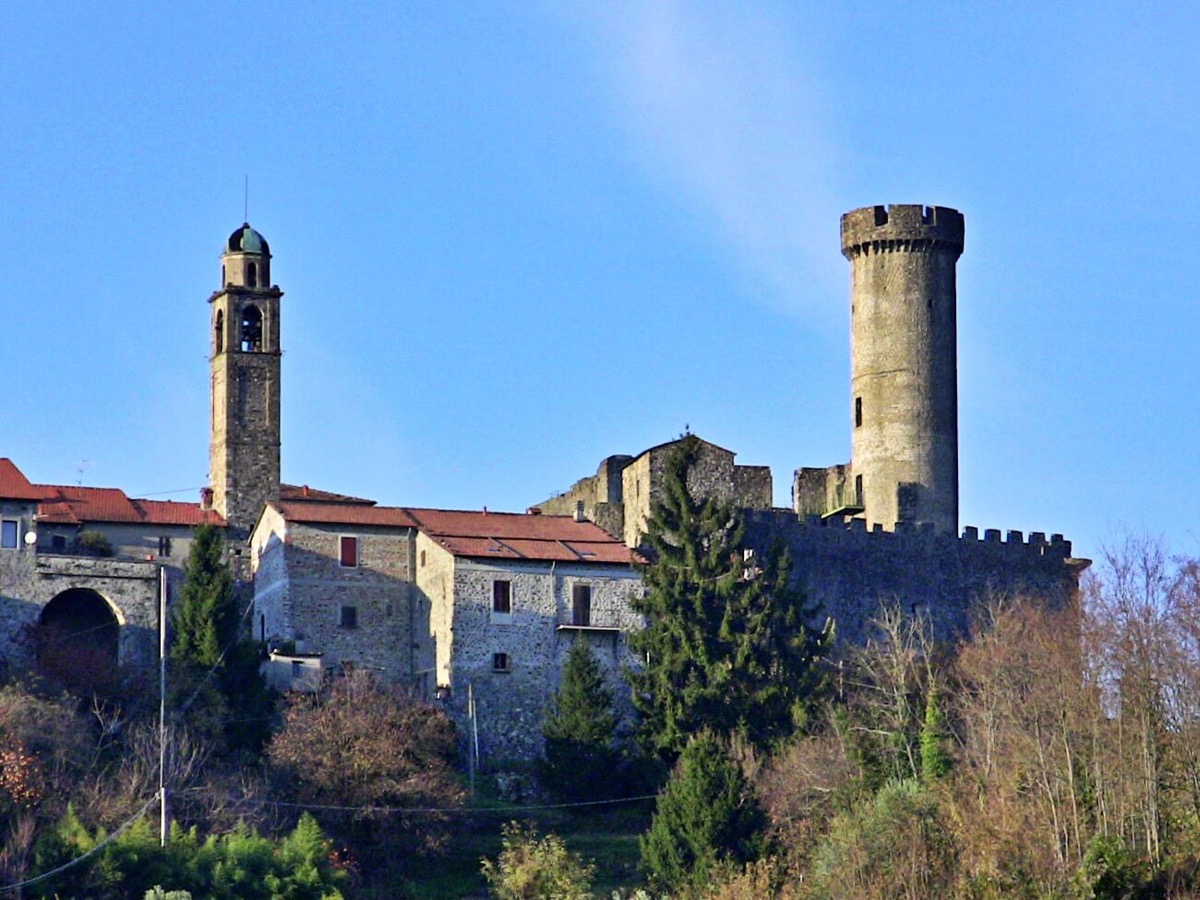
Castello di Castelnuovo Magra
Provincia della Spezia
3.9km
castle, chateau
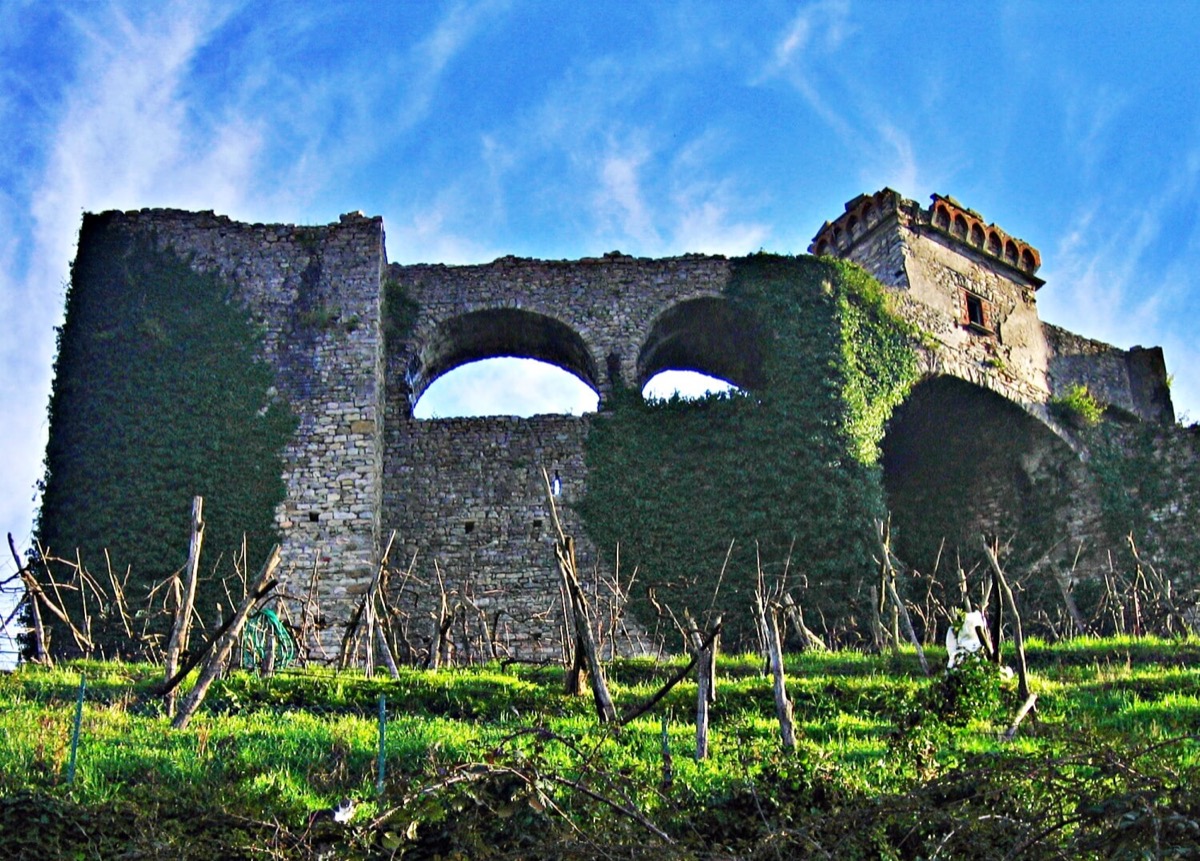
Castello di Trebiano
Provincia della Spezia
8.7km
castle, chateau
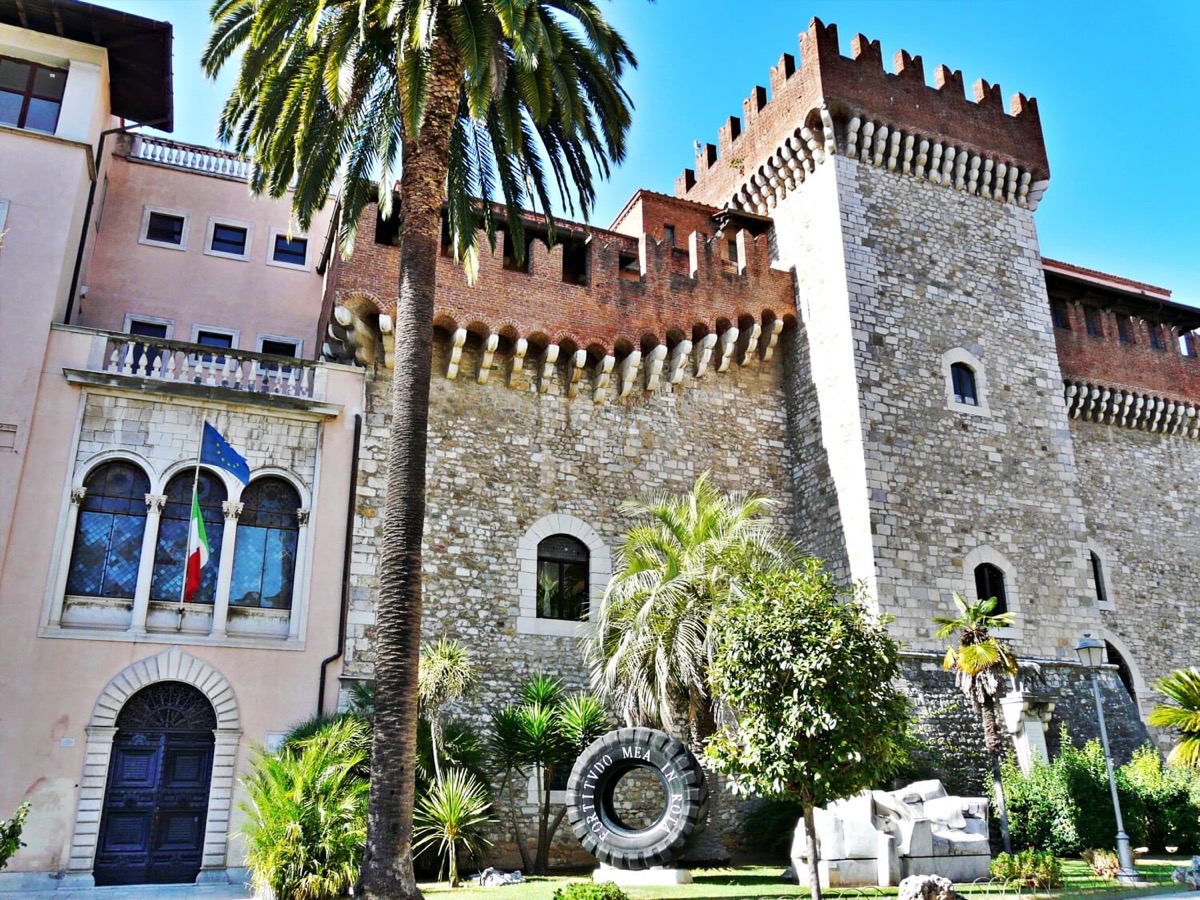
Palazzo Cybo Malaspina
Provincia di Massa e Carrara
8.9km
castle, chateau

Brunella Fortress
Provincia di Massa e Carrara
9.0km
fortress
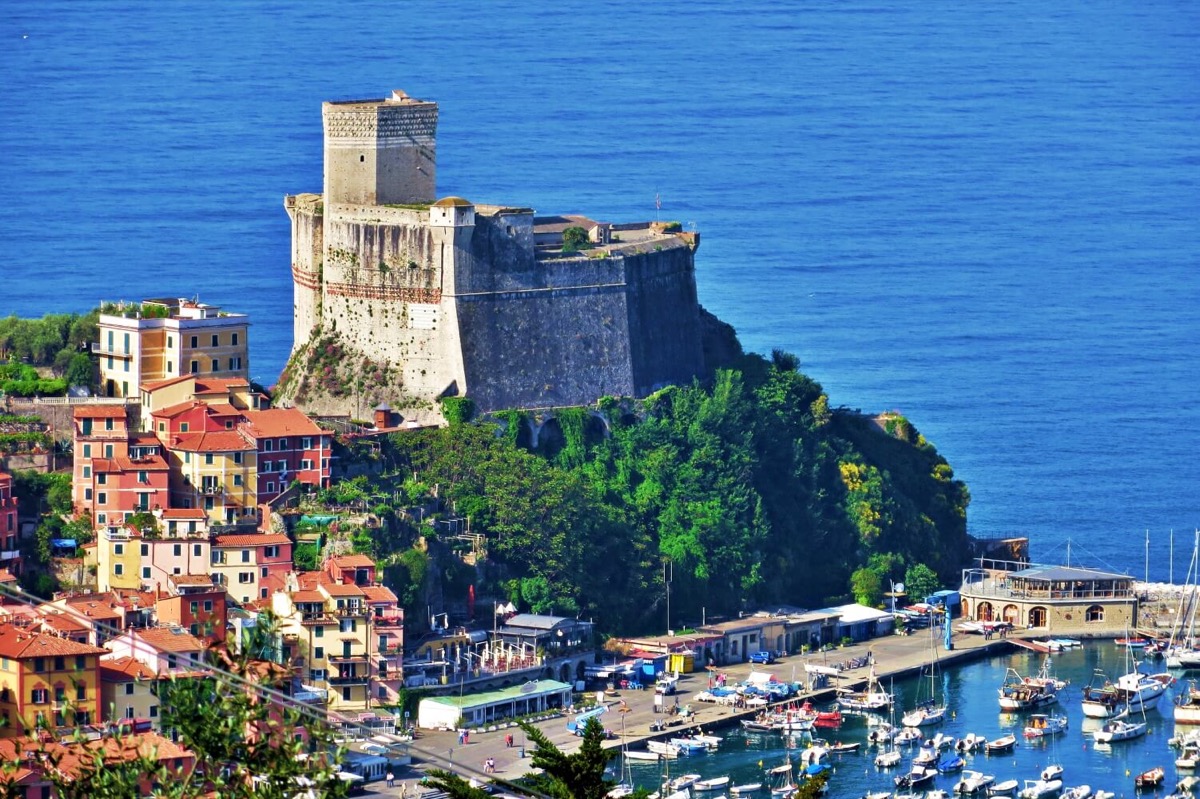
Lerici Castle
Provincia della Spezia
11.5km
castle, chateau
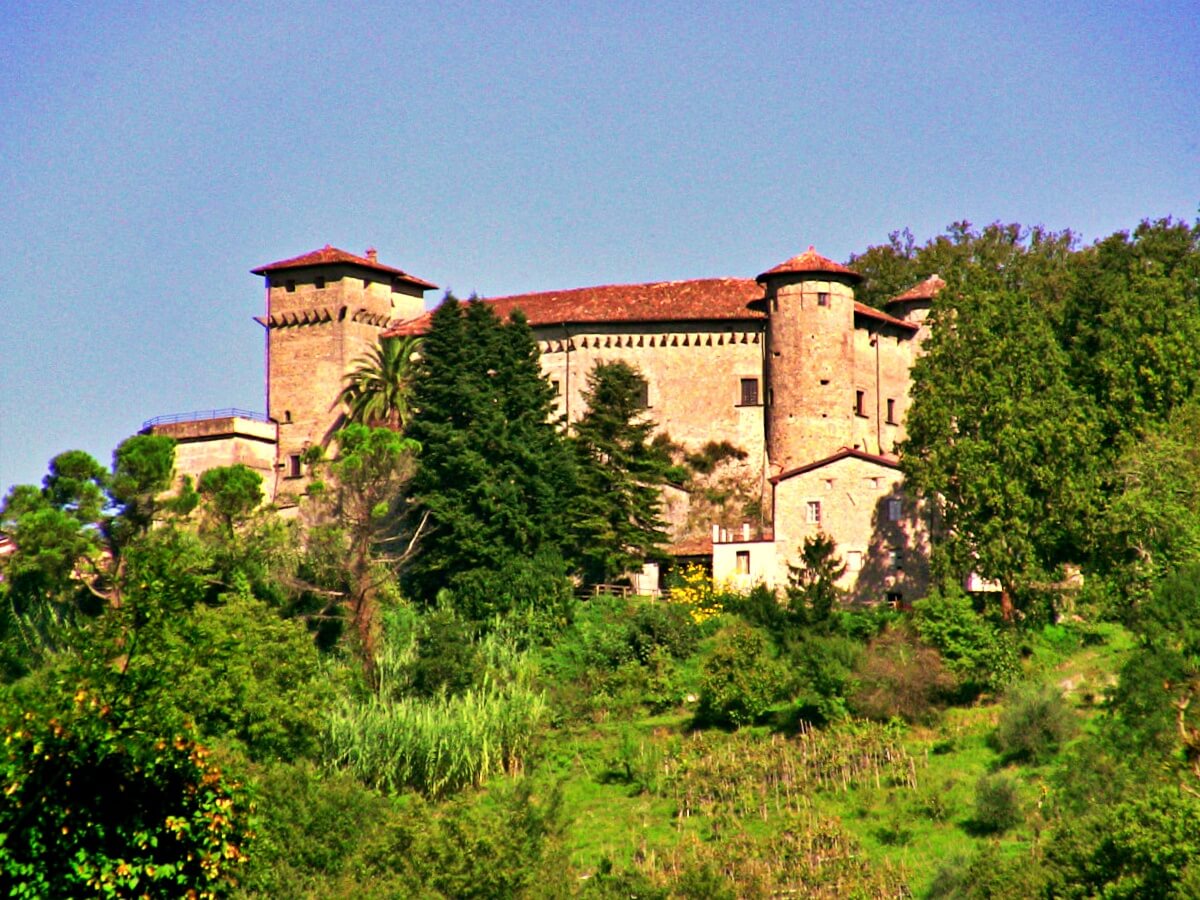
Castello di Monti
Provincia di Massa e Carrara
12.9km
castle, chateau
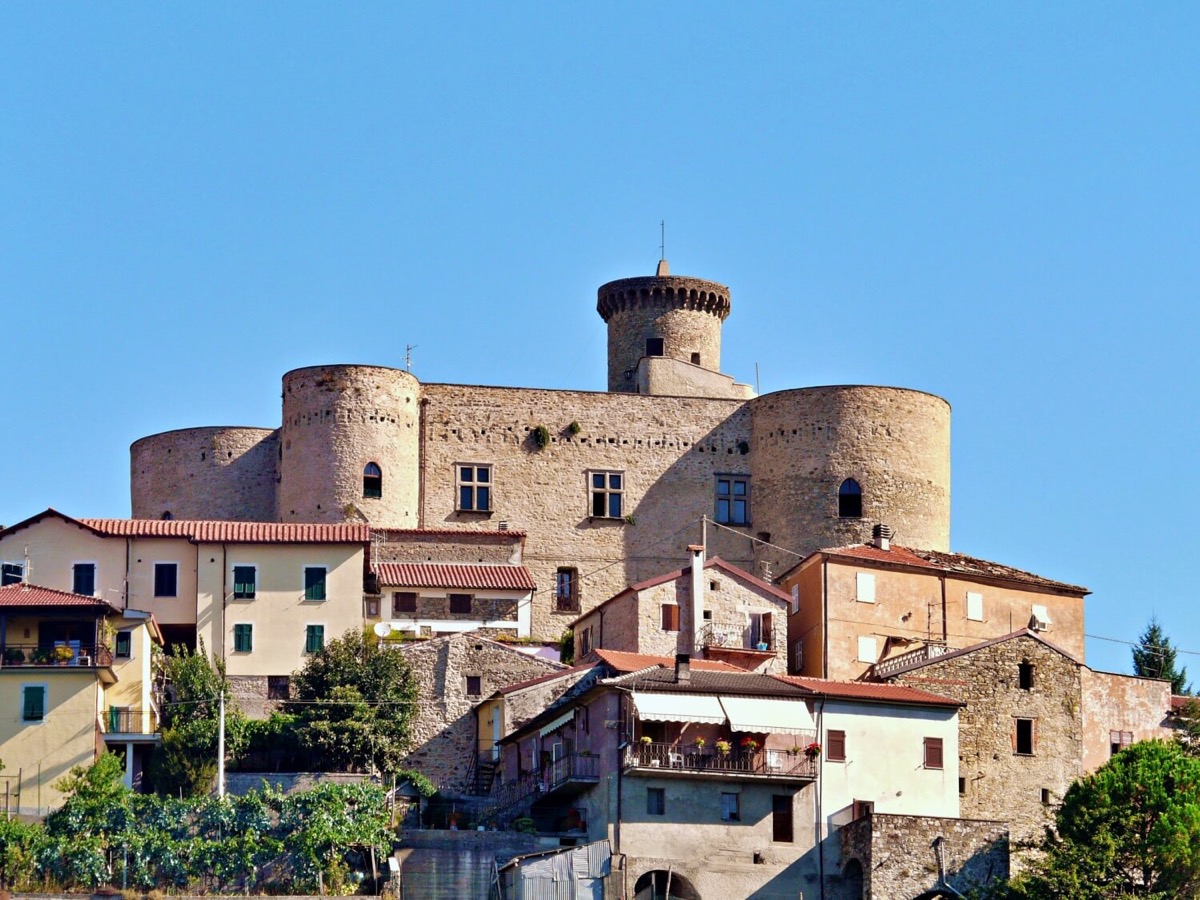
Castello di Bastia
Provincia di Massa e Carrara
14.5km
castle, chateau
